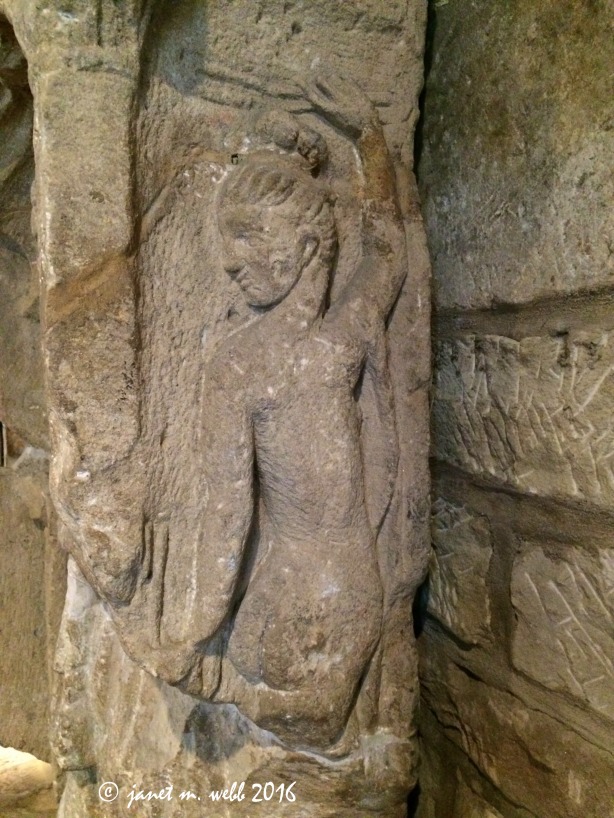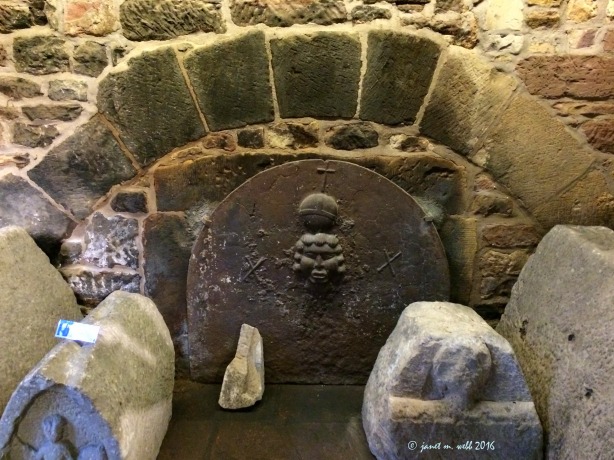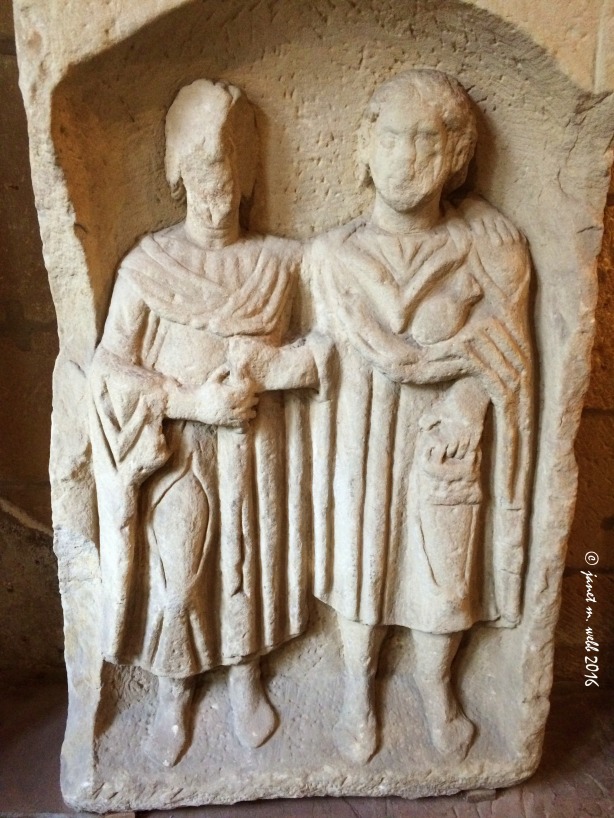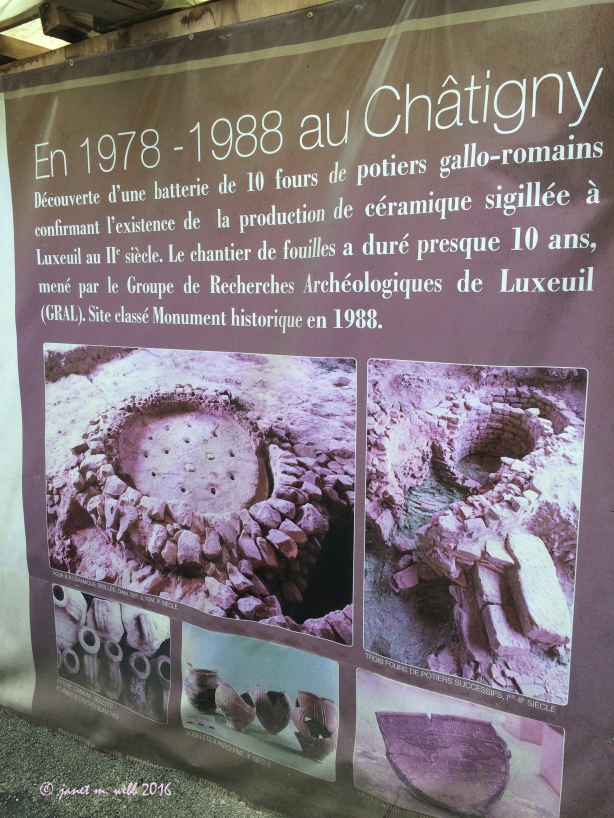I’ve always been interested in archaeology and history so when we came around a corner in the center of Luxeuil-les-Bains to see this, I was thrilled. The Luxeuil Tourist Office website (English version) tells us:
Having developed as a town in the first centuries of Christianity in France, Luxeuil had an early Christian church, built around the fifth century, before Saint Colombanus had even arrived in the region. It is against the chevet of this church that a funeral building was constructed in honour of a very important abbot, Saint Valbert, who died in 670, to whom the building serves as a memorial. All of the surrounding sarcophagi are the graves of monks and date from the seventh and eighth centuries: the Church of St. Martin thus became, from 670, the abbey’s funerary church. Listed as an historical monument, it is one of the most important sites in Eastern Europe from the Merovingian period.
As you can see, the work is ongoing.

Many of the town’s archaeological discoveries are preserved in the La Tour des Echevins Museum, the former town hall, built in the 15th century. From the Gallo-Roman period, there are funeral relics, numerous remnants from thermal baths, and ceramics from the kilns of ancient Luxeuil. From the website
The museum first appeared to be unprepossessing. However, it was quite nice. Here are a few of the discoveries we found on the museum’s first floor. The second floor was filled with ceramics, relics, and other smaller objects. The third floor featured a local artist as well as other artists. The winding, ancient, stone staircase led higher and higher, all the way to… Well, that’s a subject for another post. For now, enjoy a bit of ancient history. To see the outside of the museum (worth the look) and a little of the inside, click here. The site is in French, but the English version doesn’t have the same photos.





way fascinating. i too have been attracted to archeology from way back. even pre my understanding of my fascination with art. in fact it was through archeology that i began to understand art. and that led to my art. these photos are gems. way fun. thank you.
Glad you enjoyed them, Rick. I always thought it would be so much fun to be an archeologist and discover the remnants of history.
janet
now it is double marked in red on my bucket list… it’s absolutely worth a visit !!!
Not done with the city yet. I have one more post (for now) on Tuesday. 🙂 And you can get those raspberry tarts!!
janet
This is really interesting and great pictures, history almost beat anything. The understanding of where we came from.
I agree, Lena. What really makes it interesting is seeing real things like these and reading about real people and their lives.
janet
I love this stuff. Thanks for sharing your “find” with us. To look back that far is amazing.
I love history, Dan, so to see this was a blast. Thankfully my s-i-l could interpret what was written with all these interesting things.
janet
Love this ❤ http://www.misskymmiee.com
Thanks. 🙂
janet
Discovering this kind of stuff makes our meager history in North America look rather pathetic!
I really have trouble wrapping my head around the time that has past and all the people before us.
Just think about all the history in the Middle East! I always wanted to see the pyramids and all the Egyptian historical places, but that’s unlikely to happen these days. As for our history, there are all the Indian and other sites. 🙂
janet
I share you enthusiasm for the Middle East. Like you, I can’t see that happening anytime soon.
😦
Thanks for the interesting history lesson today, Janet. These photos really illustrate the story you told. Well done.
Ω
My pleasure entirely, Allan. There was so much just in the little museum and I believe there were some other sites, but we didn’t get to them.
janet
I know the feeling. The more you look, the more you see.
Ω
I’m so thankful for my iPhone and its wonderful camera. It makes travel photography so easy. There’s a part of me that would have liked my Nikon, but the phone allows easy travel + photography which is lovely!!
I agree with you 100%, Janet. iPhones definitely have their limitations, but if you can find their parameters and accept them a lot of things are possible.
There have been times when I’ve said to myself, “If only I had a DLSR I could….” The truth is, that when I used my SLRs I had similar thoughts—If only I had _ lens with me…
Second guessing myself is not productive to the creative process. Acceptance works a whole lot better, for me.
Ω